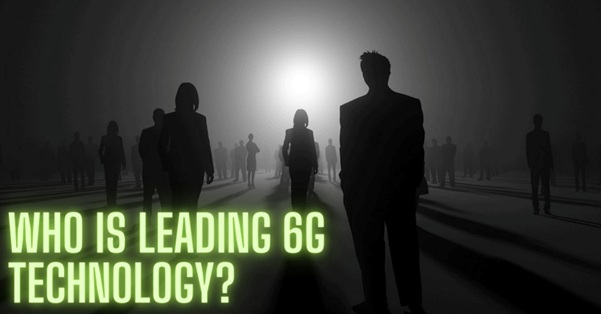The evolution of wireless technology is moving at an unprecedented pace, with 6G emerging as the next frontier. Key individuals and organizations worldwide are laying the groundwork for its development. This article provides an overview of prominent leaders and their contributions to the advancement of 6G technology. While the list is not exhaustive, it highlights pivotal contributors shaping this transformative technology. So, now let us see leading figures driving 6G technology development along with User-friendly LTE RF drive test tools in telecom & Cellular RF drive test equipment and User-friendly Mobile Network Monitoring Tools, Mobile Network Drive Test Tools, Mobile Network Testing Tools in detail.
Understanding Leadership in 6G Research
6G research is a collaborative effort involving global technology companies, academic institutions, and public-private partnerships. The advancement of 6G requires expertise in diverse fields such as artificial intelligence (AI), cybersecurity, and advanced network architectures. By examining contributions from corporate leaders and researchers, we can better understand the roles they play in accelerating 6G development.
Key Corporate Leaders in 6G Research
Major multinational technology companies are actively engaging in 6G research. Below are examples of corporate leaders who have publicly demonstrated a commitment to this emerging field:
- Chris Boyer (AT&T)
As Vice President of Global Security and Technology Policy, Chris Boyer has contributed significantly to discussions on Open Radio Access Network (O-RAN) and its potential role in 6G networks. His insights during strategic panel discussions highlight AT&T’s focus on secure and scalable 6G architectures. - Jan Soderstrom (Ericsson)
Jan Soderstrom, Vice President and Head of Advanced Technology in the U.S., is driving Ericsson’s 6G research initiatives. He actively participates in 6G summits, providing valuable perspectives on the integration of advanced wireless technologies. - Sanjay Udani (Verizon)
As Vice President for Policy, Sanjay Udani oversees Verizon’s approach to emerging technologies, including 6G. His responsibilities encompass cybersecurity, privacy, spectrum, and supply chain security—key factors in shaping the future of wireless communication.
Academic and Research Contributions to 6G
Academic institutions play a crucial role in advancing 6G technology. Research centers such as the 6G@UT Lab at the University of Texas at Austin are pioneering innovations in this space. Funded by the NextG Alliance, the lab’s work exemplifies the interdisciplinary approach required for 6G development. Key contributors include:
- Jeffrey G. Andrews
Serving as the Director of the 6G@UT Lab, Andrews leads research on spectrum extensions and wireless network optimization. His work emphasizes the application of machine learning (ML) to enhance network architectures, a critical component for 6G deployment. - Todd E. Humphreys
Humphreys heads research on pervasive sensing. This area involves leveraging 6G networks as platforms for continuous data collection, enabling ML algorithms to dynamically optimize network performance. Additionally, sensing-as-a-service models are expected to redefine the role of wireless systems. - Gustavo de Veciana
De Veciana’s work focuses on open network architectures, including network slicing and resource sharing. By building on the O-RAN paradigm, his research aims to create customizable, automated, and software-driven network solutions.
Notable Leaders in Public-Private Partnerships
The NextG Alliance, a North American initiative, exemplifies the collaborative efforts required to achieve 6G capabilities. Key figures driving this partnership include:
- David Young
As Managing Director of the NextG Alliance, Young coordinates efforts among member organizations to establish a comprehensive 6G roadmap. - Eric Burger
Serving as Academic and Research Liaison Office (ARLO) Director, Burger facilitates collaboration between academic researchers and industry stakeholders. His work ensures that the latest innovations are incorporated into the alliance’s strategic framework. - Steering Group Co-Chairs
Devaki Chandramouli (Nokia), Brian Daly (AT&T), and Benoit Pelletier (VMware) lead the steering group. Their combined expertise spans network infrastructure, software development, and policy advocacy, ensuring a holistic approach to 6G research.
Global Contributions to 6G Research
Beyond North America, leaders from Europe and Asia are making significant strides in 6G technology:
- Dr. Mikko A. Uusitalo (Nokia Bell Labs)
As Project Lead for the EU’s Hexa-X initiative, Dr. Uusitalo coordinates research efforts to define 6G’s vision and technical requirements. Nokia’s leadership in Hexa-X underscores its commitment to fostering innovation and collaboration. - Andy Clegg (Google)
Clegg’s work as Spectrum Engineering Lead focuses on innovative spectrum utilization techniques and regulatory frameworks. These efforts aim to maximize the efficiency and availability of spectrum resources for future networks. - Micaela Giuhat (Microsoft)
As Director of 5G Policy, Giuhat is expected to shape Microsoft’s strategic approach to 6G. Her advocacy for favorable regulatory conditions highlights the importance of policy in driving technological advancements. - Dr. Hyunho Park (Samsung Research)
Dr. Park leads the Advanced Communications Research Center, spearheading Samsung’s global investments in 6G. His contributions include research on network technologies that aim to establish Samsung as a leader in the field.
Future Directions in 6G Research
As the technology continues to mature, new experts and organizations will emerge, contributing to the development of 6G. Collaboration among stakeholders from private companies, academic institutions, and regulatory bodies will remain essential. The integration of AI, advanced sensing, and innovative spectrum management techniques will redefine wireless communication, making 6G a transformative force in connectivity.
Conclusion
The journey to 6G involves a diverse array of leaders, each contributing unique expertise to this ambitious endeavor. From corporate executives driving strategic initiatives to researchers developing groundbreaking technologies, these individuals are shaping the future of communication. Continued collaboration and innovation will ensure that 6G not only meets but exceeds the expectations of a hyper-connected world.
About RantCell
RantCell turns your smartphone into a powerful tool for testing and monitoring networks. It measures important things like signal strength, download speed, and latency in real time, helping telecom providers and businesses find and fix problems quickly.
With RantCell, there’s no need for expensive equipment. It’s an affordable and easy-to-use solution that works well in cities and remote areas. Plus, its cloud platform ensures accurate and reliable results. Also read similar articles from here.

